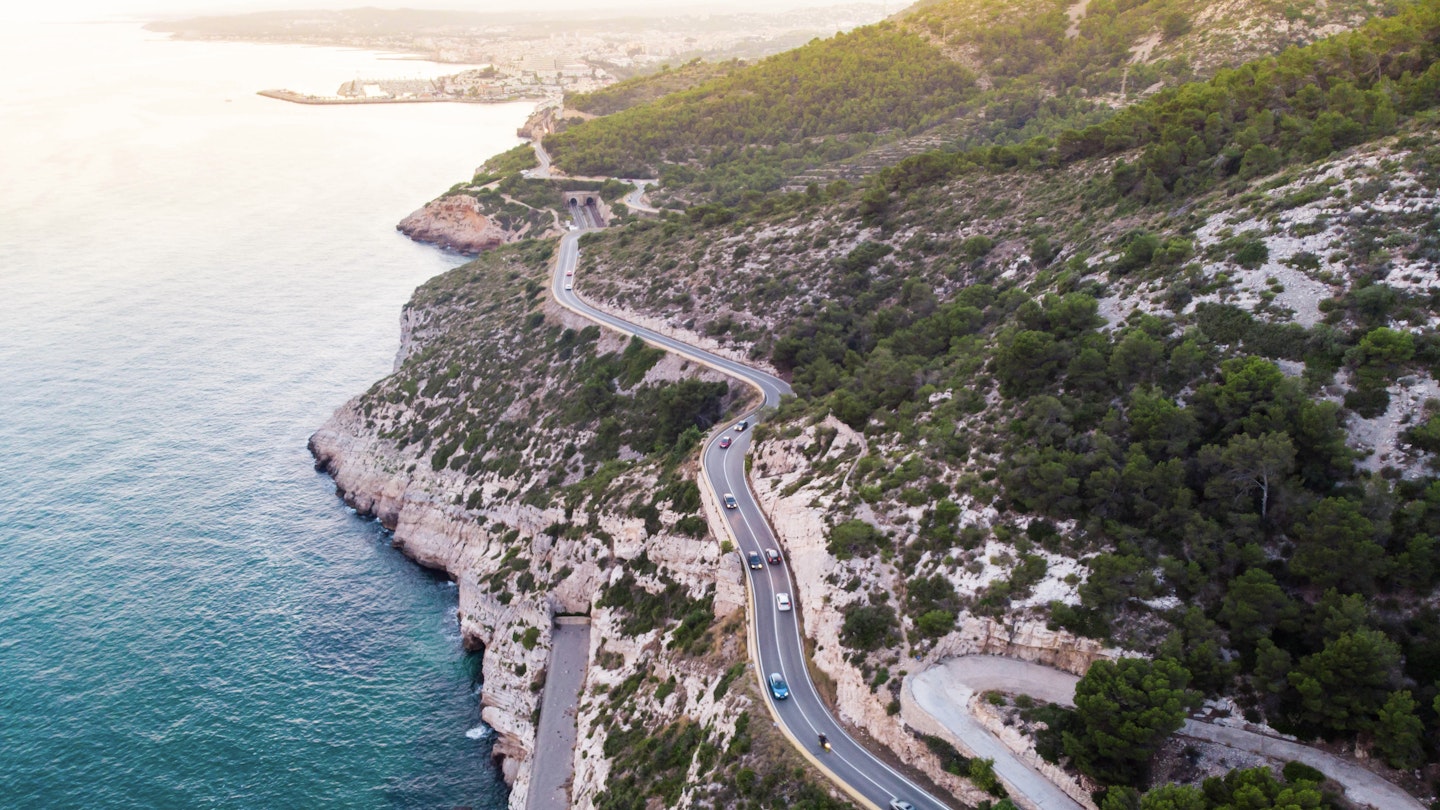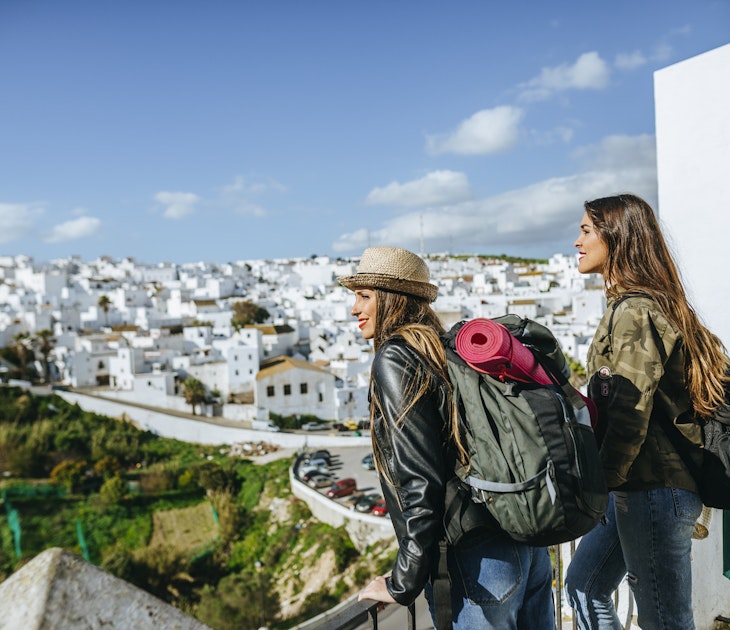Explore Spain’s world-famous natural scenery and cultural heritage – and savor its acclaimed cuisine at every pit stop – with a road trip across this beautiful country.
Wherever you head, you can count on passing medieval castles and ancient cities, charming seaside towns, towering mountain ranges and coastlines that stretch for miles. In between the memorable monuments, Spain’s pueblos (villages) offer the chance to recharge with traditional tapas (small plates) among warm locals.
Get into gear with these five outstanding driving routes, which will show you some of the best parts of Spain.
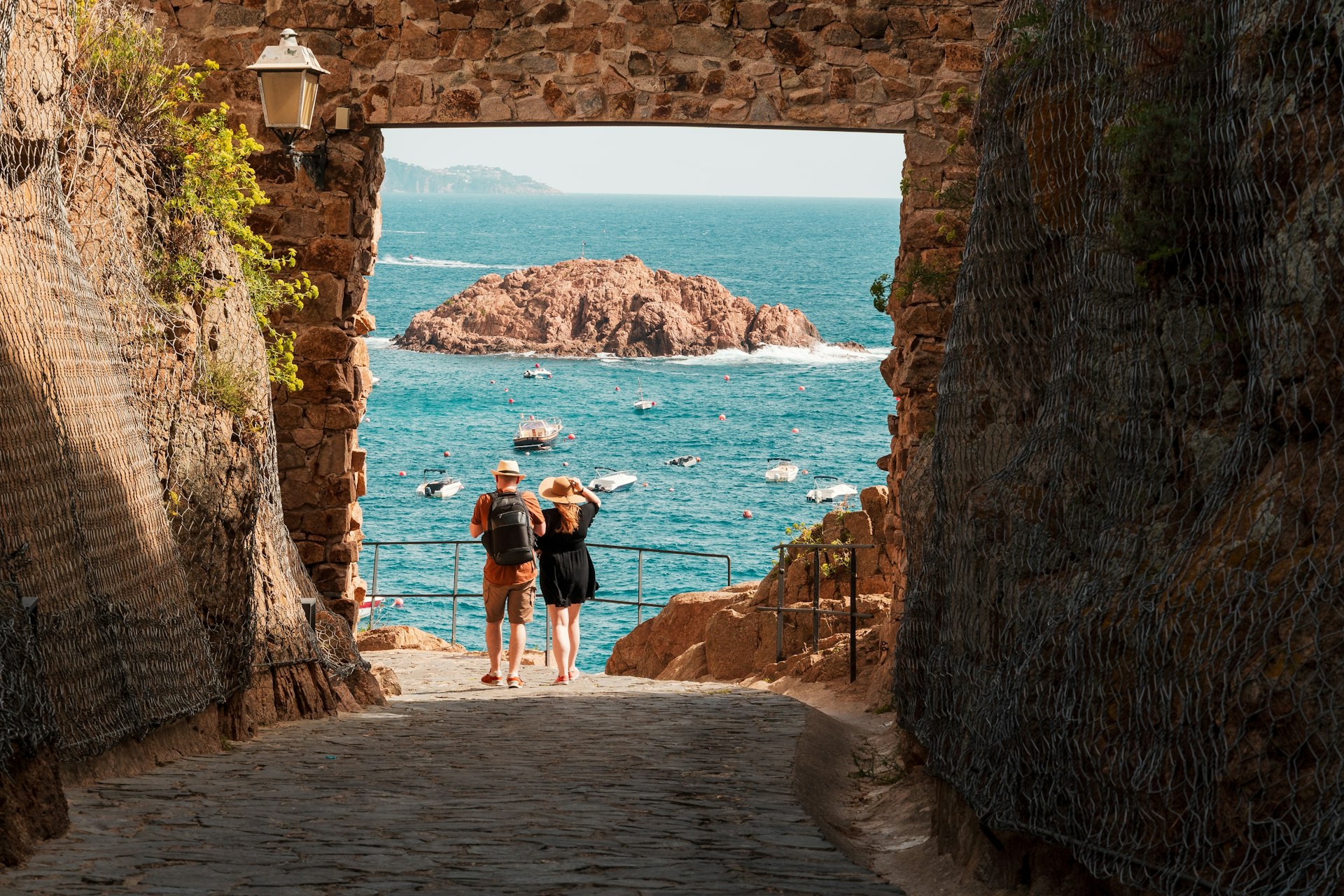
1. Costa Brava road trip
Best road trip for Catalonian history and cuisine – and all things Dalí
Barcelona – Cadaqués; approx 246km (153 miles); allow 3-4 days
Spain is blessed with over 3000 miles of coastline, and one of its most spectacular stretches is the Costa Brava, along the Mediterranean on the northeastern coast of Catalonia. This drive will reward you with long, sunlit beaches; historic cities; and picturesque fishing villages that inspired the region’s most famous artist, Salvador Dalí.
Starting in Barcelona, take the GI-682 road from Tossa de Mar to Sant Feliu de Guíxols, where there are designated viewpoints to stop and gawk at the spectacular scenery. Detour from the coastline for a pit stop at the ancient city of Girona to take in its iconic cathedral (which has one of the widest Gothic naves in the world), and the archaeological treasures at Banys Àrabs (Arab Baths).
Art lovers will not want to miss the famous “Dalinian Triangle” (formed by the municipalities of Figueres, Portlligat and Púbol), where you can immerse yourself in Salvador Dalí's outlandish world by visiting his former residences, now open to the public.
The road trip ends at the quaint seaside town of Cadaqués on the bay of the Cap de Creus peninsula. This was a favorite summer playground of iconic artists and writers, including Dalí, Pablo Picasso, Daphne Guinness, Man Ray, Frederico Garcia Lorca, Melina Mercouri and Marcel Duchamp, among many others. And now you.
Planning tip: Girona’s El Celler de Can Roca has been named the world’s best restaurant numerous times over the years, and it takes bookings up to a year ahead. So what are you waiting for? Get those reservations in now.
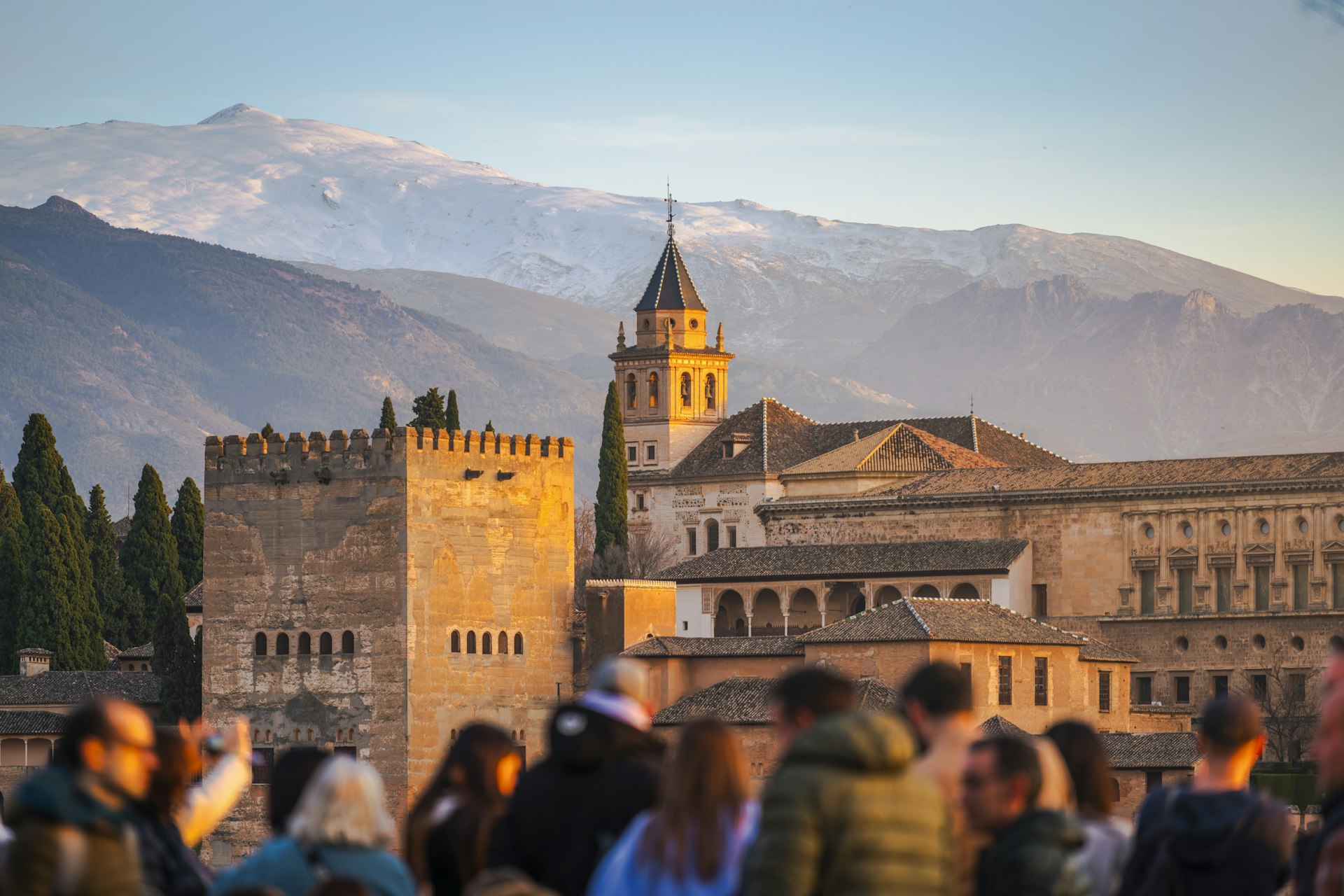
2. Andalucía road trip
Best road trip for getting close to Spain’s Moorish past
Malaga– Seville; 471km (293 miles), allow 5 days
Southern Andalucía is the only European region that has both Mediterranean and Atlantic coastlines, linked by the Strait of Gibraltar. A drive through this fascinating region takes you along the justly popular Costa del Sol.
Start in the sunlit coastal city of Málaga, and enjoy stunning views of the Sierra Nevada mountains. Head inland for the enchanting cities of Granada and Córdoba, where the imprint of the Muslim dynasties that ruled Spain until the 15th century is palpable.
No visit to Granada is complete without stopping at the Alhambra, the ancient palace and citadel of the Nasrid Dynasty, which gloriously blends Moorish and Christian decorative styles. The same entrance ticket will get you into the nearby Palacio de Generalife, a summer palace for the Nasrid sultans.
Córdoba is a captivating city that is home to the La Mezquita–Catedral de Córdoba (the Córdoba Mosque), the city’s shining jewel which, alongside the Alhambra, represents the apex of Islamic architecture in Spain.
A 90-minute drive from Córdoba, the Andalusian capital of Seville offers an idiosyncratic and dreamy mix of horse-drawn carriages, citrus trees, a colossal Gothic cathedral, Mudéjar (Moorish) architecture and flamenco tablaos (flamenco performances).
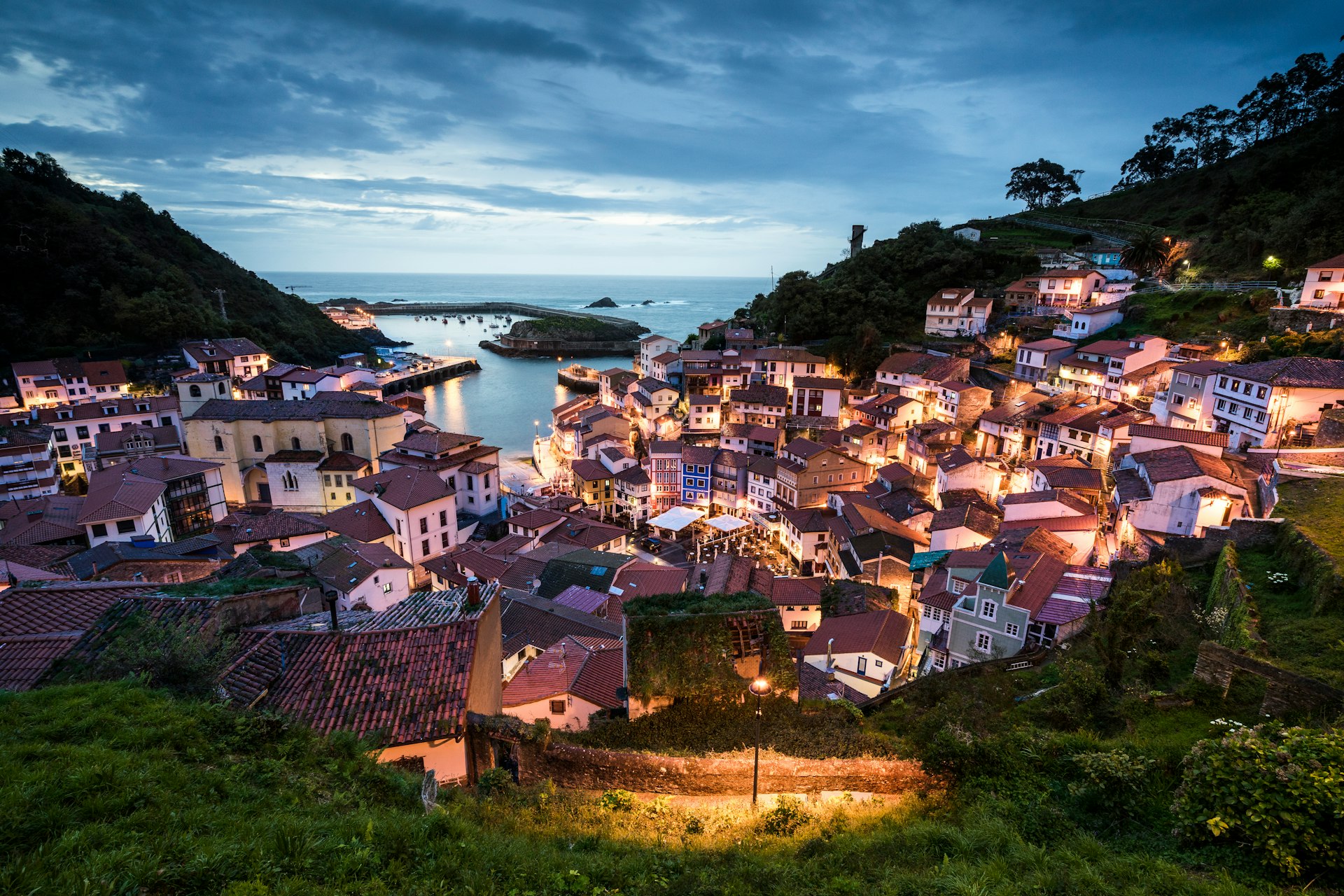
3. Northern Spain road trip
Best road trip for greenery and cuisine along Spain’s Atlantic coast
San Sebastián – Santiago de Compostela; 750km (466 miles), allow 6–7 days
Because the north of Spain sees more rainfall than the rest of the country, its landscapes tend toward the verdant; on the road, you’ll be treated to a visual feast of lush hillsides, snow-capped mountain peaks and Atlantic Ocean views. This itinerary will take you across four autonomous communities of Spain, departing from the Basque Country, crossing Cantabria and Asturias, then ending in Galicia.
A great jumping-off point is the gastronomic coastal city of San Sebastián, which has the greatest concentration of Michelin-starred restaurants per square meter in Europe. It would be ideal to spend a day or two here to explore the city’s Parte Vieja (Old Quarter), and savor the endless array of pintxos (appetizers) that tempt you at every turn.
Not too far away is the Basque islet of San Juan de Gaztelugatxe, which has become world-famous as the filming location for Dragonstone in Game of Thrones. This breathtaking rocky precipice juts out into the Bay of Biscay, and is connected to the mainland by a long, winding stone staircase. Crowning the islet is a small chapel with a bell at its facade: tradition calls for visitors to ring the bell three times and make a wish.
Stretch out your legs on the spectacular golden sand beach, Playa del Sardinero, in the port town and Cantabrian capital of Santander. The whimsical oceanfront Magdalena Palace was built in the early 1900s as a summer residence for the royal family.
You’ll enjoy dramatic views of the Picos de Europa mountain range as you drive onward into Asturias. Stop by Oviedo to explore the charming old town and try the traditional fabada asturiana bean stew. Finally, join pilgrims from all over the world at Santiago de Compostela, the final destination of the thousand-year-old pilgrimage of the Camino de Santiago (Way of St James), where you could visit the Basilica of Santiago de Compostela, the reputed final resting place of St James the Apostle. Luckily, you won’t be tired from walking there.
Planning tip: Most car-rental firms will gladly throw in a silla infantil (car seat) for an additional cost. You should always book these in advance, especially around holidays like Christmas and Holy Week (when finding a car to rent itself can be a challenge).
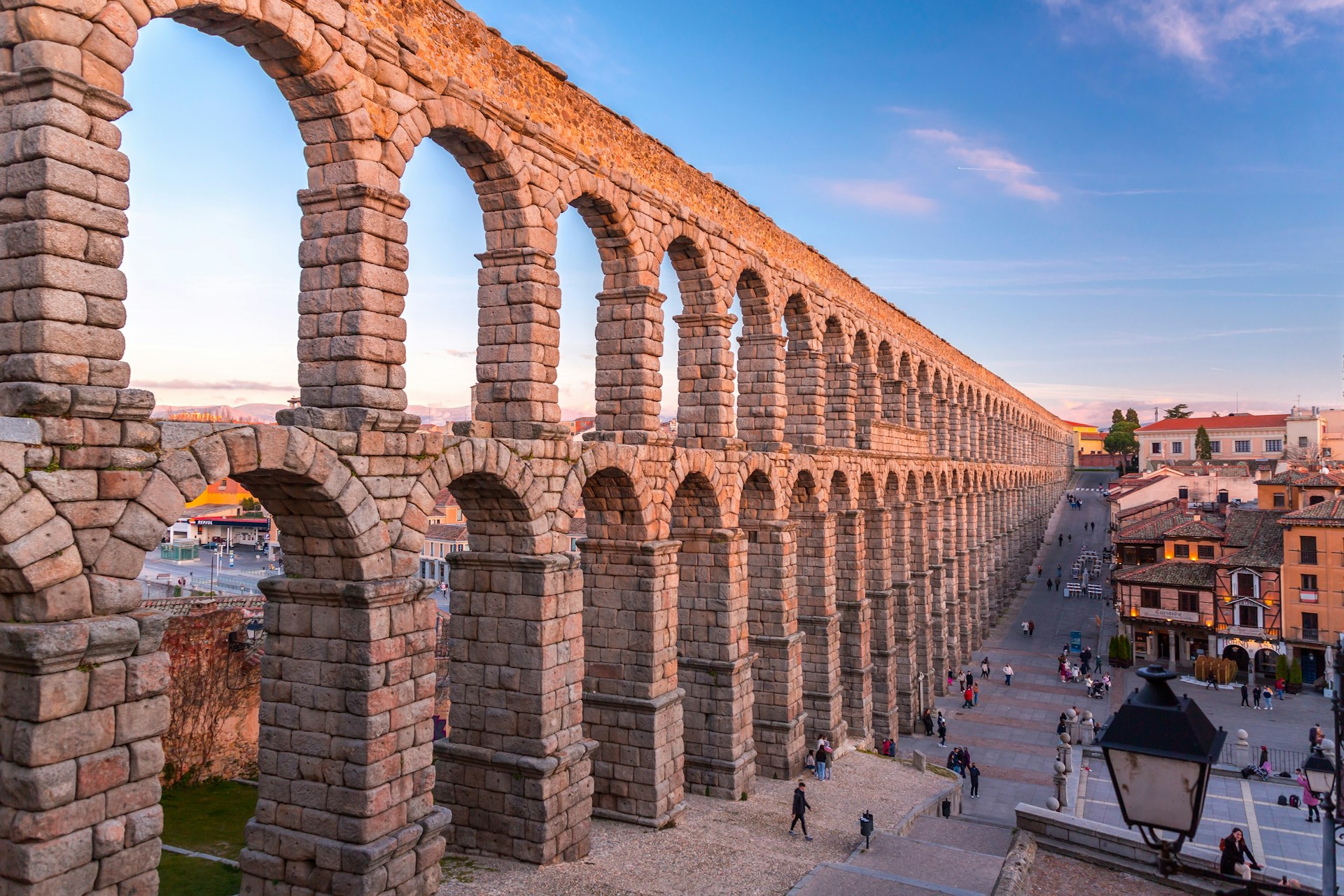
4. Castilla y León road trip
Best road trip for towns filled with medieval castles, churches and charm
Madrid – Salamanca; 265km (165 miles), allow 2 days
This itinerary through central Spain takes you across plateaus with the dramatic backdrop of the Sierra de Guadarrama mountain range and into some of Spain’s most outstanding historic towns in the Castilla y León region. Look forward to walled medieval cities, fortified castles, Romanesque architecture, Gothic cathedrals and UNESCO World Heritage sites.
Just over an hour away from Madrid, your starting point, lies Segovia, famous for its magnificent Roman aqueduct, Gothic cathedral and the 12th-century Alcázar of Segovia castle.
The next stop is the medieval-era walled town of Ávila, “the town of stones and saints,” known for having the most Gothic and Romanesque churches in Spain (and that’s saying something!). Spend a day walking its cobblestone streets and visiting the El Salvador Cathedral, San Vicente Basilica and the Convent/Museum of St Teresa, perhaps the town’s most famous native.
End your road trip in the charming university town of Salamanca, known as “La Cuidad de Oro” (Golden City), since its honey-colored sandstone walls glow with infinite golden hues in the late afternoon light.
Local tip: Castilla y León is hot and sunny in summer – but winters can get cold. The climate is relatively dry, even in the cold months, which means it doesn’t snow very often – but temperatures can drop below zero overnight. Pack for proper winter weather.
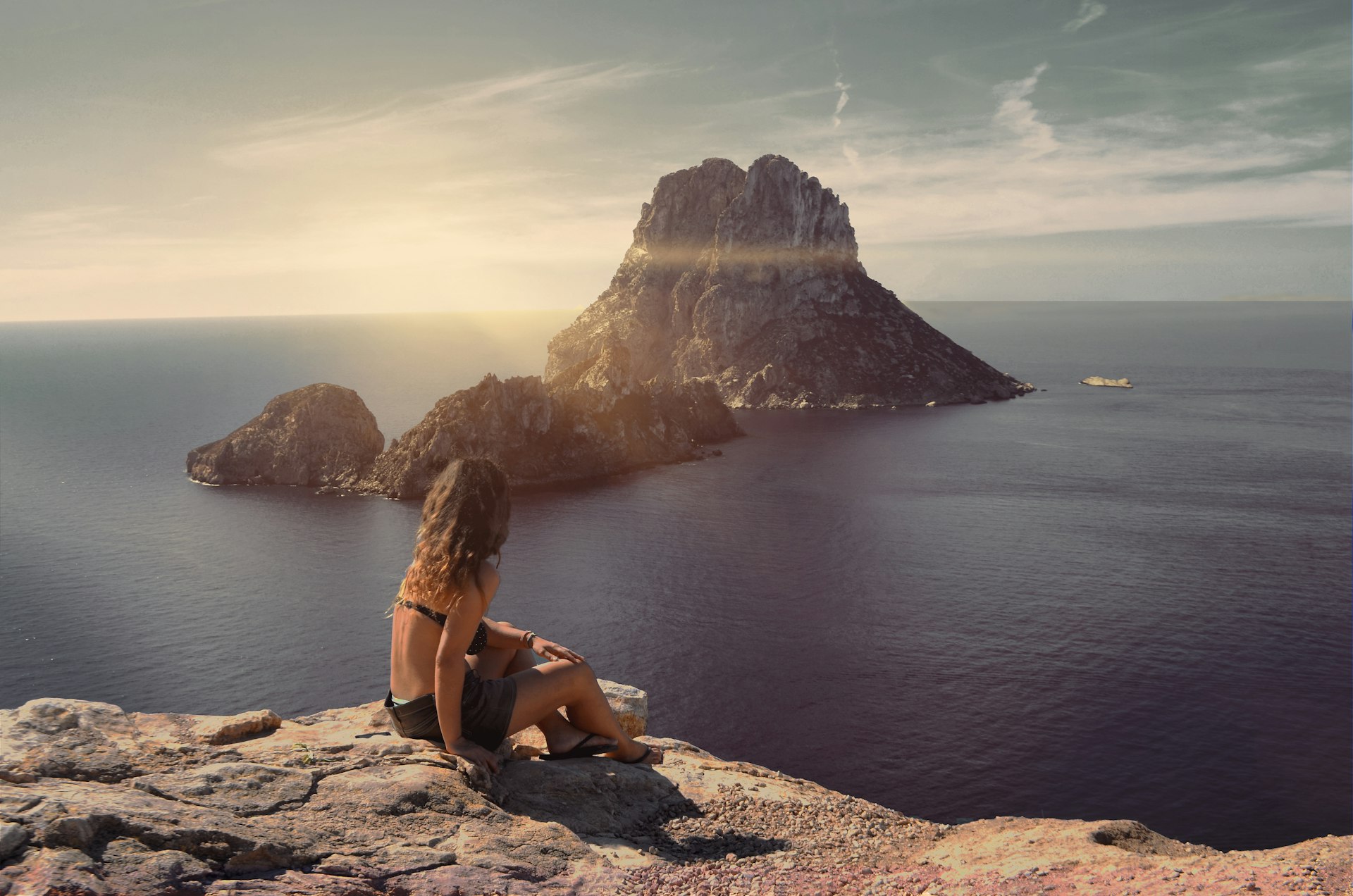
5. Ibiza road trip
Best road trip for coves and beaches
Ibiza Town – Cala d’Hort; 35km (22 miles), allow 1–2 days
Renting a car in Ibiza is the best way to explore the island’s stunning calas (or coves): having your own wheels will save you both time and expensive taxi fares. While the island has a reputation as a 24/7 party destination, its timeless allure lies more in its natural attractions: think rugged cliffs, turquoise-colored waters and ancient archaeological sites.
Starting from Ibiza Town, drive over to Ses Salines beach at the southern tip of the island (only about 10 minutes away) to get a taste of glamorous beach life. It’s not uncommon to spot celebrities soaking up the sun or enjoying cocktails in one of the many beachside bars and restaurants.
A fascinating contrast awaits at Sa Caleta (Es Bol Nou), a more secluded beach tucked between rugged red cliffs. Take some time to hike up the ancient Phoenician civilization World Heritage site of Sa Caleta ruins, and pause for some fresh seafood at the cala’s restaurant, with its shady Mediterranean garden bar.
End your drive at Ibiza’s emblematic Cala d’Hort, featuring the mythical Es Vedrà island, which rises 382m (1253ft) from the glittering Mediterranean waters. Everything from UFOs to the Virgin Mary have reportedly been seen on this island, giving it its legendary status. While it’s a spellbinding sight at any time of the day, viewing it for the first time at sunset is an almost transcendent experience.
Local tip: The Balearic Islands, including Ibiza, are pushing forward long-term projects to transform tourism into a more sustainable and less seasonal industry. Check out Illes Sostenible and Ibiza Sostenible for information on ways you can get involved, from “plogging” to restoring corals.
